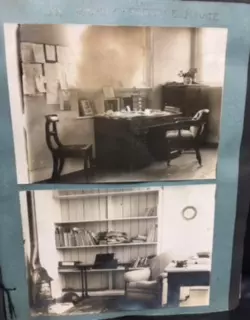
ZSL
Zoological Society of London
August 5th 2017 marks 120 years since the birth of ZSL London’s first female curator of Herpetology – Joan Beauchamp Procter.
Procter was born on the 5th August 1897, to a mother who was an artist and a father who was a stockbroker. Her passion for nature began at a young age and in the ZSL Collection we have a book on reptiles gifted to her by her younger sister Chrystobel for her 13th birthday.
She kept many reptiles as pets, and entered into correspondence with George Boulenger who was the Keeper of Reptiles and Fishes at the then British Museum (Natural History). He was so impressed by the skills and knowledge of the young Procter, that he invited her to work with him in 1916, and acted as a mentor to her. When George Boulenger retired, Procter took over from him at the British Museum.

At 19, she authored her first paper for the Proceedings of the Zoological Society of London, about the Pit Viper and she was elected as a fellow of ZSL in August 1917.
Procter's time at London Zoo
Procter was friends with George Boulenger’s son – Edward – who was at the time Reptile Curator at London Zoo. Having grown tired of the work at the British Museum, she began to help Edward with tasks at the Zoo. With her artistic flair, and keen draughtswoman skills, she helped with plans for the new aquarium in 1923 – and after four months joined the staff as Curator of Reptiles and Amphibians – the first woman to hold this position. She started on a salary of £360 (about £20,000 in today’s money). As Peter Chalmers Mitchell notes in his Centaury History of the Zoological Society of London:
“…After the year of probation, Miss Procter was appointed as full Curator, she and Mr Boulenger continuing to understudy one another and taking charge of both the aquarium and reptile house during the absence of either of them. She was the author of many scientific memoirs and was well known to experts in the group throughout the world, with the result that through her correspondents she had been able to extend the collection. But in addition to such scientific knowledge of the group, he is devoted to them as living creatures, studies their distastes and tastes in health and in disease, and has added much to the knowledge of their treatment in captivity…”
At the opening of the Aquarium in 1924, Boulenger and Procter were noted to have sourced a great display of fishes and invertebrates for the tanks, but they had difficulty establishing suitable seaweeds in time so Procter set about making “imitations of the more common species from thin sheets of coloured rubber, with which nearly all the salt water tanks were supplied”.

Designing the Reptile House
Procter’s gifts as a designer continued to be proven in her designs of the Reptile House; a project that was very much regarded as hers.
The design included ‘vita glass’ which provided natural ultraviolet light needed by the reptiles, and was a high tech concept at the time. Procter’s deep understanding of reptiles helped to produce a design that was, at the time, very forward thinking.
Procter contributed to numerous other pieces of rockwork and outdoor enclosures in the gardens – including Monkey Hill (on the site of the old animal hospital), which contained 80 sacred baboons; and helping with the design for the main entrance gate.
Procter corresponded widely with fellow reptile experts and enthusiasts around the world – in several languages. The letters written to her that we hold in the Archive show that she was well regarded by everyone from professional herpetologists, to neighbours, and school children.
Sadly, Procter suffered from poor health for most of her life, and she went to Whipsnade for convalescence, but died in 1931 aged only 34. Whipsnade commemorated her with the road ‘Miss Joan’s Ride’ which still runs through the site today. In the Reptile House at London Zoo, there is a bust of her by George Alexander. She also had two species of reptiles named after her: Buhoma procterae (snake) and Testudo procterae (tortoise).

